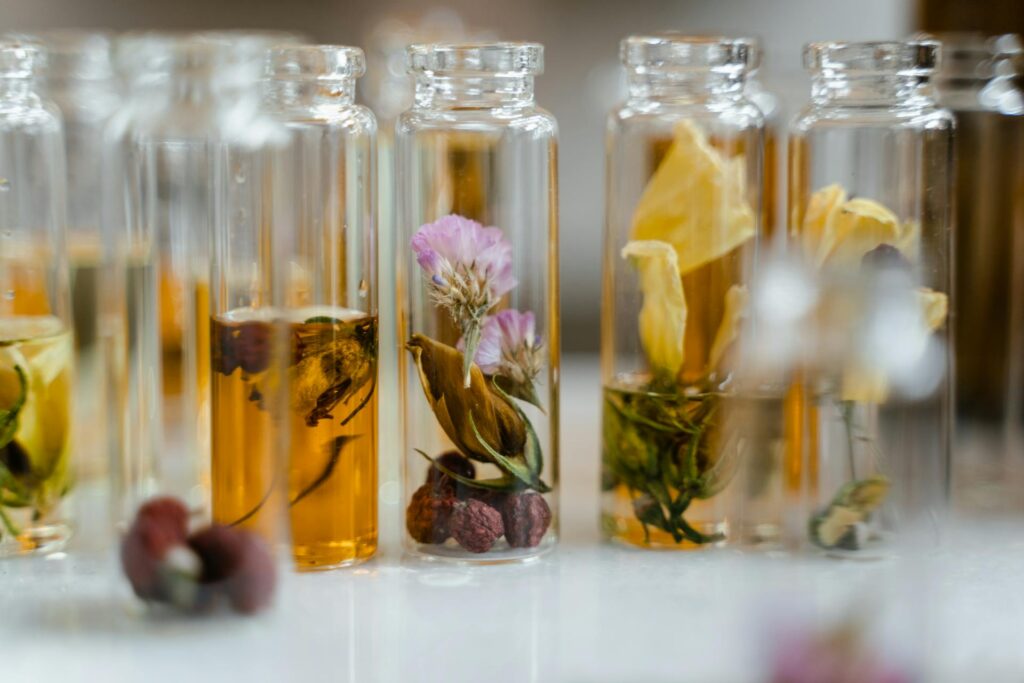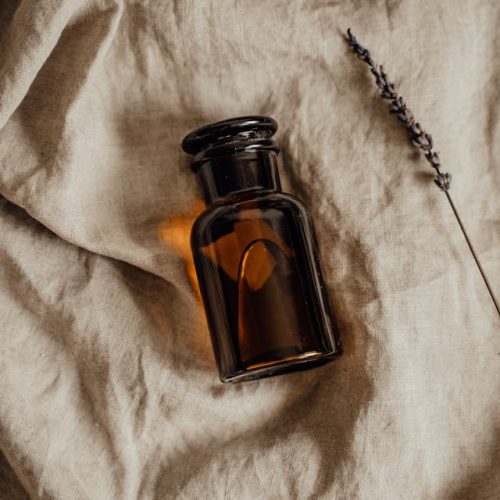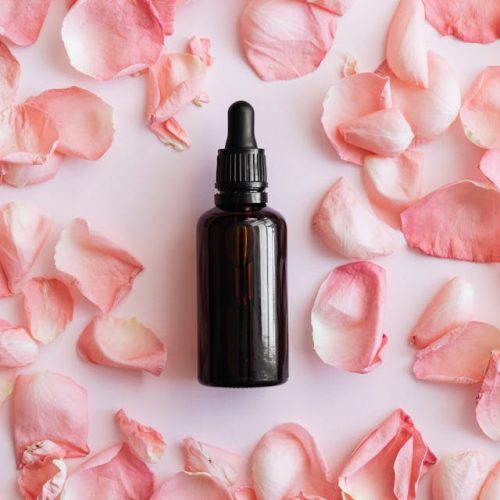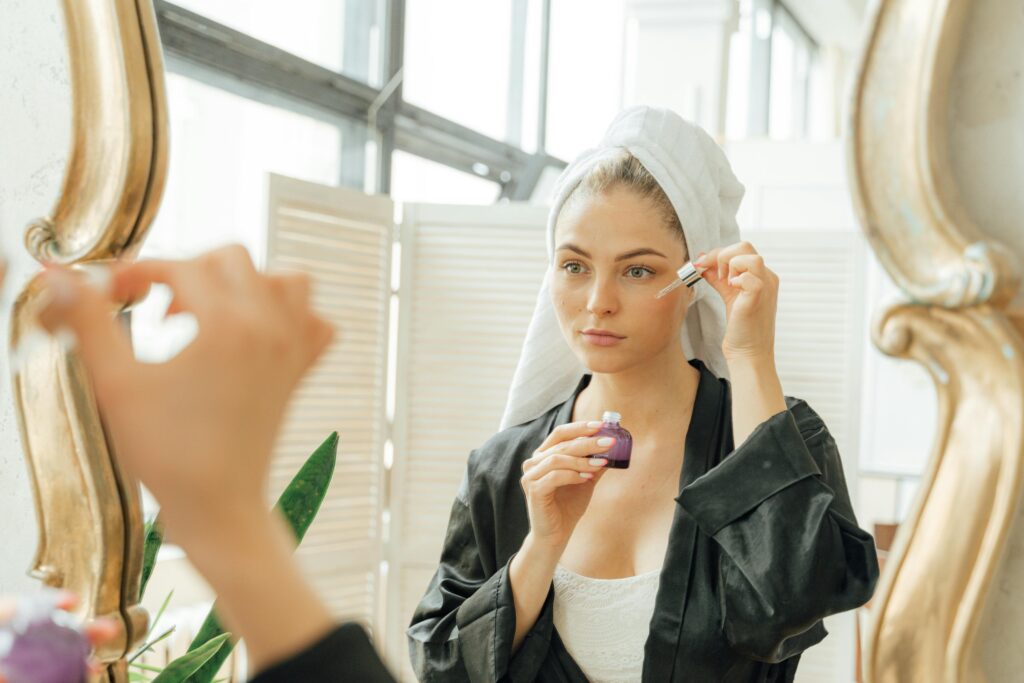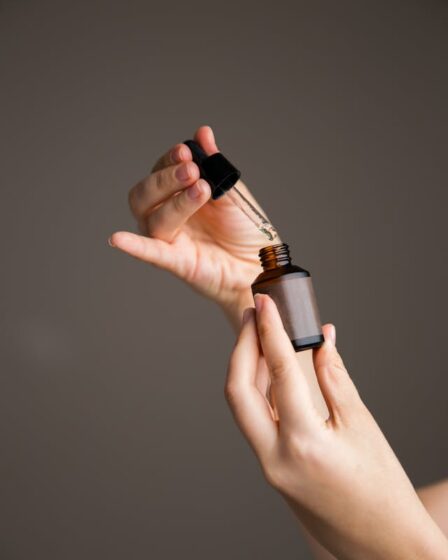Aromatherapy and Skin Care: The New Frontier of Natural Beauty Treatments
The world of skincare is undergoing a silent but profound revolution. At the intersection of science and ancestral traditions, aromatherapy and anti-aging solutions emerge as protagonists of a new era in beauty treatments. This holistic approach not only promises visible results but also offered me a sensory experience that transformed my skincare routine into a genuine self-care ritual. Unlike conventional treatments, which often focus solely on the symptoms of aging, aromatherapy-based solutions work on multiple levels, addressing both skin and emotional well-being.
To understand the revolutionary potential of aromatherapy and anti-aging solutions, we need to dive into the universe of essential oils and their bioactive properties. These concentrated substances, extracted from plants through meticulous processes, contain molecules that interact directly with our skin biology and nervous system. Recent studies have demonstrated that certain compounds present in essential oils can stimulate cellular renewal, increase collagen production, and combat oxidative stress – crucial factors in fighting premature aging. This article explores how this combination can transform your skincare routine, offering sustainable and natural results.
The Science Behind Aromatherapy in Skin Rejuvenation
The effectiveness of aromatherapy and anti-aging solutions is not just folklore or marketing – there is a solid scientific basis supporting its use. Essential oils contain bioactive molecules such as terpenes, flavonoids, and phenolic compounds that interact directly with skin cell receptors. When applied topically in appropriate formulations, these compounds can penetrate through the epidermal layers and reach the dermis, where vital regeneration processes occur.
A study published in the Journal of Cosmetic Dermatology demonstrated that damascene rose essential oil significantly increased the expression of genes related to type 1 collagen production in human fibroblasts. This means that, at the molecular level, this essential oil can effectively “program” your cells to produce more collagen – the protein responsible for skin firmness and elasticity. Similarly, frankincense and myrrh oils have shown impressive regenerative properties, accelerating healing and promoting cellular renewal.
Another fascinating aspect of aromatherapy and anti-aging solutions is their ability to combat oxidative stress. Free radicals are unstable molecules that damage cells and accelerate aging. Essential oils such as lavender, chamomile, and sandalwood are rich in natural antioxidants that neutralize these free radicals, protecting cells against molecular damage and preserving their longevity. This antioxidant protection mechanism is crucial for any effective anti-aging strategy.
The Synergistic Power: Combining Aromatherapy and Botanical Active Ingredients
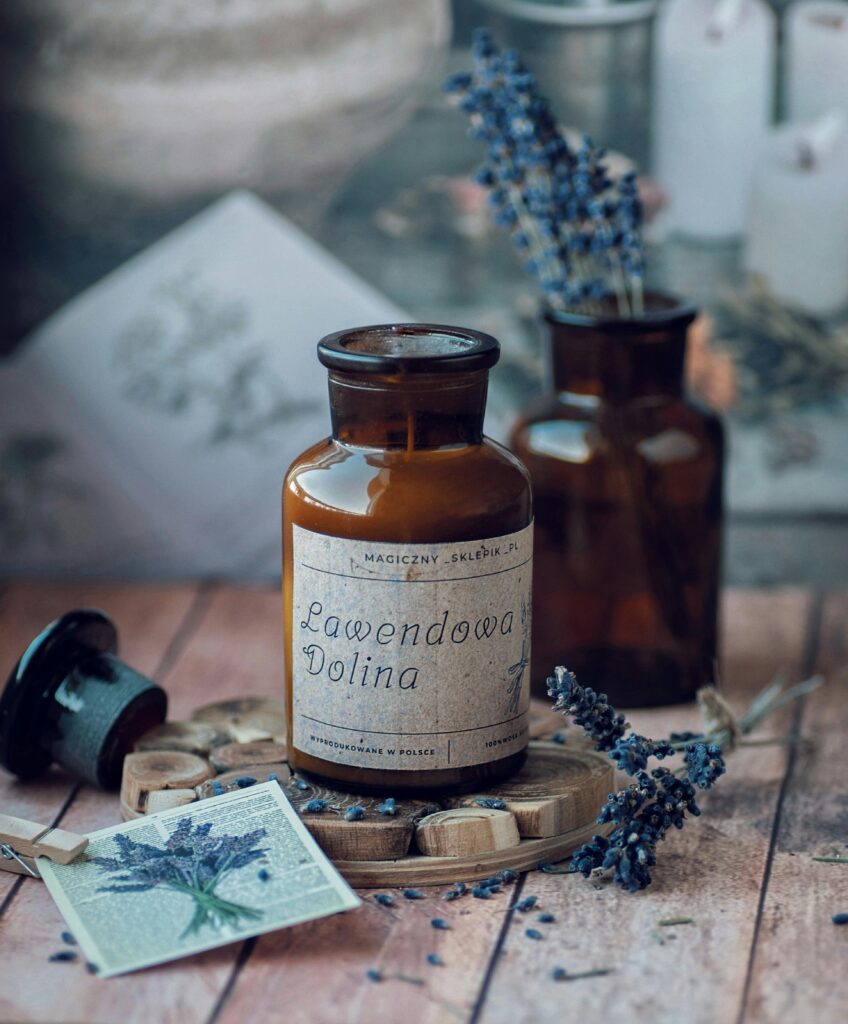
The true magic of aromatherapy and anti-aging solutions lies in the synergy between essential oils and other botanical ingredients. When formulated correctly, these natural components mutually enhance their effects, creating results superior to the sum of their individual parts. This synergistic approach represents a paradigm shift in anti-aging treatments, moving away from the dependence on isolated synthetic ingredients. A powerful example of this synergy is the combination of neroli essential oil with marine algae extracts. Neroli contains limonene and linalool, compounds that improve skin penetration and stimulate microcirculation. When combined with the polysaccharides and minerals present in algae, they create a complex that not only deeply hydrates but also strengthens the extracellular matrix – the “skeleton” that keeps the skin firm and resilient. Advanced formulations have explored these interactions to create products that offer visible results without side effects. Another notable combination includes frankincense (olibanum) essential oil and rosehip extract.
The boswellic acid present in frankincense is known for inhibiting the enzymes that degrade collagen, while the essential fatty acids of rosehip provide the “building blocks” for new collagen and elastin fibers. This partnership creates a dual effect: protecting existing fibers while stimulating the production of new ones, resulting in a significant improvement in skin firmness and texture. These strategic combinations illustrate the unexplored potential of aromatherapy and anti-aging solutions when approached with scientific precision.
Another remarkable combination includes frankincense (olibanum) essential oil and rosehip extract. The boswellic acid present in frankincense is known for inhibiting the enzymes that degrade collagen, while the essential fatty acids of rosehip provide the “building blocks” for new collagen and elastin fibers. This partnership creates a dual effect: it protects existing fibers while stimulating the production of new ones, resulting in a significant improvement in skin firmness and texture. These strategic combinations illustrate the untapped potential of aromatherapy and anti-aging solutions when approached with scientific precision.
Transformative Essential Oils for Anti-Aging
Not All Essential Oils Possess Significant Anti-Aging Properties. In nature’s vast pharmacy, some stand out for their exceptional ability to revitalize mature skin. These “super oils” form the backbone of any effective aromatherapy and anti-aging solutions, each offering unique benefits based on their specific biochemical profile.
The helichrysum (immortelle) essential oil is considered the holy grail of skin regeneration. Rich in italidiones, neryl acetate, and curcumenes, this precious oil demonstrates potent anti-inflammatory properties, stimulates microcapillary circulation, and promotes the dissolution of fibrin deposits that contribute to scars and spots. Recent research suggests that helichrysum can activate cellular mechanisms that improve dermal density and significantly reduce wrinkle depth when used consistently.
Sandalwood (particularly Santalum album) deserves special attention within the arsenal of aromatherapy and anti-aging solutions. Its active compounds, especially alpha and beta-santalol, have demonstrated the ability to inhibit tyrosinase (reducing hyperpigmentation) and increase keratinocyte proliferation, promoting cellular renewal. Most fascinating is its ability to mimic olfactory receptor action in the skin – a phenomenon called “chemomimesis” – which can activate rejuvenation pathways even in minimal concentrations. Clinical studies have correlated regular use of this oil with measurable improvements in skin elasticity and luminosity.
Rose essential oil (Rosa damascena) transcends its reputation as a mere aromatic agent to establish itself as a powerful anti-aging ally. Beyond its impressive antioxidant profile, recent research has identified specific compounds in rose that modulate the expression of genes associated with cellular longevity. These compounds, including citronellol and geraniol, have demonstrated the ability to positively regulate transcription factors related to structural protein production in the dermis. Moreover, the aroma of rose has shown to reduce cortisol levels – the stress hormone that accelerates skin aging – creating a tangible connection between aromatherapy and visible skin results.
Personalized Formulations: The Key to Exceptional Results
Personalization represents the future of aromatherapy and anti-aging solutions. Unlike the standardized approaches of the conventional cosmetic industry, aromatherapy offers the possibility of creating precisely tailored formulations to the individual needs of each skin type and specific aging concern. This personalized approach considers factors such as biological age, environmental exposure, sensitivity, and specific treatment goals.
For mature skin with a tendency towards dehydration and loss of elasticity, a mixture containing frankincense essential oils (5 drops), lavender (3 drops), and cypress (2 drops) diluted in 30ml of pomegranate seed oil can create a powerful synergy.
Frankincense stimulates cellular renewal, lavender balances sebum production, while cypress improves microcirculation. Pomegranate oil, rich in punic acid, acts as a penetrating vehicle and additional antioxidant, enhancing the effects of essential oils.
For skin with hyperpigmentation and age-related spots, a formulation containing sandalwood essential oils (4 drops), helichrysum (3 drops), and patchouli (2 drops) in 30ml of rosehip oil can offer impressive results. Sandalwood and helichrysum work synergistically to regulate melanin production, while patchouli adds healing and regenerative properties. This targeted approach illustrates how aromatherapy and anti-aging solutions can be adapted to address specific concerns with precision and effectiveness.
Personalization must also consider the psycho-emotional aspect of aging. Oils like bergamot, ylang-ylang, and holy basil can be incorporated into formulations not only for their skin benefits but also for their ability to elevate mood and reduce anxiety – factors that directly impact the genetic expression related to cellular aging. This holistic approach represents the true essence of modern aromatherapy and anti-aging solutions.
Application Protocols: Maximizing Treatment Effectiveness
Video By MART PRODUCTION
The way we apply products based on aromatherapy and anti-aging solutions is as important as their formulation. Specific application techniques can significantly enhance the penetration of active ingredients and amplify their rejuvenating effects. Unlike conventional products that are often simply spread over the skin, aromatherapeutic formulations greatly benefit from structured application methodologies.
The facial massage technique called “Ascending Effleurage” deserves special attention. This method involves light, upward movements that follow facial muscle tension lines, simultaneously stimulating microcirculation and lymphatic drainage. When combined with a serum or facial oil containing anti-aging essential oils like geranium, frankincense, and neroli, this technique can increase tissue oxygenation by up to 30%, as demonstrated in laser flowmetry studies. The upward movements also work against gravitational force, offering a temporary lifting effect that, with consistent use, can translate into lasting improvements in facial tone.
Another advanced protocol involves strategic layered application, known as the “Stratification Method”. In this approach, different aromatherapy and anti-aging solutions are applied sequentially to achieve complementary objectives. For example, a first layer containing lemon and cypress essential oils diluted in witch hazel hydrosol can be applied to prepare the skin, followed by a second, more nutritive layer containing rose and frankincense oils in an argan oil vehicle. This stratification allows different actives to reach specific skin layers, creating a three-dimensional rejuvenation effect.
Chronobiology – the study of how biological processes follow temporal cycles – also offers valuable insights for optimizing aromatherapy and anti-aging solutions protocols. Recent research demonstrates that skin is most receptive to regenerative actives during the sleep phase, when cellular repair processes are naturally accelerated. Nighttime formulations can be enhanced with essential oils like lavender, Roman chamomile, and vetiver, which not only support skin regeneration but also promote superior sleep quality – creating a positive cycle of benefits for skin and overall well-being.
Integration with Other Natural Rejuvenation Modalities
Vídeo By Monstera Production
The true potential of aromatherapy and anti-aging solutions is revealed when strategically integrated with other natural rejuvenation approaches. This holistic vision recognizes that skin aging is a multifactorial process that requires interventions on multiple levels for transformative results. Aromatherapy can serve as a central component in an integrated anti-aging care system. The combination of aromatherapy with facial acupressure techniques represents a particularly powerful synergy
Specific acupressure points, such as Yintang (between the eyebrows), Taiyang (temples), and Juliao (base of the nose), when stimulated in conjunction with the application of targeted essential oils, can significantly amplify cellular response. For example, the application of a mixture containing geranium and ylang-ylang essential oils on the Renzhong point (below the nasal septum) has been shown to increase facial blood flow and tissue oxygenation in preliminary studies, offering an immediate “glow effect” and cumulative benefits with regular use.
Gua sha, an ancient Chinese technique using stone tools to massage facial tissue, also perfectly complements aromatherapy and anti-aging solutions. The movement of a jade or rose quartz stone over skin previously prepared with appropriate essential oils creates a combination of benefits: the technique itself stimulates lymphatic circulation and reorganizes connective tissue, while essential oils penetrate more deeply due to the applied micro-pressure.
Clinical studies have demonstrated that this combination can significantly improve facial contour and reduce the appearance of fine lines in just 4 weeks of consistent use.
Another promising integration involves combining aromatherapy and anti-aging solutions with targeted nutraceutical supplementation. Compounds like astaxanthin, coenzyme Q10, and alpha-lipoic acid, when consumed internally while their botanical analogs are applied topically through aromatherapeutic formulations, create a “sandwich” effect of cellular protection. This simultaneous internal-external approach maximizes active ingredient bioavailability and creates an ideal cellular environment for regeneration and protection processes, representing the most advanced frontier in natural rejuvenation.
The Future of Aromatherapy and Anti-Aging Solutions: Emerging Trends
The field of aromatherapy and anti-aging solutions is rapidly evolving, driven by scientific advances and growing demand for effective natural approaches. Researchers and formulators are exploring new frontiers that promise to further revolutionize this intersection between aromatherapy and anti-aging care. These emerging innovations deserve attention for their transformative potential.
Liposomal encapsulation technology represents a significant advance in enhancing the effectiveness of aromatherapy and anti-aging solutions. This technique involves encapsulating essential oil molecules in microscopic phospholipid structures, protecting them against oxidation and allowing sustained release in the skin. Preliminary studies indicate that essential oils like Damascus rose and frankincense, when encapsulated, demonstrate bioactivity up to three times superior compared to conventional formulations. These intelligent “nano-carriers” can precisely target active ingredients to specific cellular receptors, minimizing waste and maximizing efficacy.
Another fascinating trend is the development of “chronobiological blends” – essential oil mixtures specifically formulated to synchronize with the skin’s natural circadian rhythms. Recent research in skin chronobiology has revealed that different genes related to regeneration and protection are expressed at specific times of the day. Morning formulations can prioritize citrus and energizing spice oils with high antioxidant capacity, while night blends can incorporate oils like jasmine, sandalwood, and Roman chamomile, which have been shown to enhance the expression of repair genes during sleep. This chronologically optimized aromatherapy and anti-aging solutions approach represents a new dimension in treatment personalization.
The concept of “aromatic neurocosmetics” is also emerging as a promising frontier. This approach explores how certain essential oils can influence the production of specific neuropeptides that directly impact skin health. For example, vetiver essential oil has demonstrated the ability to modulate beta-endorphin production, which not only induces a sense of well-being but also positively regulates gene expression associated with collagen synthesis. These discoveries pave the way for formulations that use specific aromas as strategic “biochemical activators”, elevating aromatherapy and anti-aging solutions to an unprecedented level of sophistication.
Enjoying this content? You’ll love this one too:
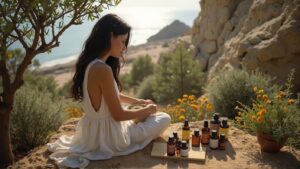
The Spiritual Significance
of Essential Oils in the Bible.
Frequently Asked Questions About Aromatherapy and Anti-Aging Solutions
1. Can essential oils really penetrate the skin deeply enough to make a difference?
Yes, many essential oil components have low molecular weight and lipophilic properties that allow penetration through the stratum corneum. Studies using confocal microscopy have confirmed that molecules like limonene, linalool, and alpha-pinene can reach the dermis, where they interact with fibroblasts and other cells responsible for collagen and elastin production.
2. Which essential oils are most effective for combating deep wrinkles?
For more pronounced wrinkles, essential oils with higher concentrations of regenerative compounds are recommended: frankincense (Boswellia carterii), helichrysum (Helichrysum italicum), Damascus rose, and sandalwood (Santalum album). These oils contain bioactive molecules that stimulate collagen production, inhibit enzymes that degrade the extracellular matrix, and reduce chronic inflammation – all critical factors for improving deep wrinkles.
3. Can aromatherapy replace aesthetic procedures like Botox or fillers?
Although aromatherapy does not produce instant results like medical interventions, many users report that with consistent long-term use, aromatherapeutic formulations can offer significant and more natural improvements in skin quality. The advantage of aromatherapy is that it addresses the fundamental causes of aging, not just visible symptoms, and offers cumulative benefits without side effects.
4. How often should I apply aromatherapy-based products for anti-aging results?
For optimal results, bi-daily application (morning and night) of appropriate formulations is recommended. Studies demonstrate that consistency is crucial for visible results with aromatherapy and anti-aging solutions. Preliminary results can be observed after 2-3 weeks, but significant transformations typically require 8-12 weeks of regular use.
5. Is there a risk of sensitization or irritation with prolonged use of essential oils?
When used at appropriate concentrations (generally 1-5% for facial application) and correctly diluted in quality carrier oils, the risk of sensitization is minimal for most people. However, it is always recommended to perform a patch test before incorporating new essential oils into your routine, especially for people with sensitive skin or conditions like rosacea or dermatitis.
Conclusion: The Transformative Power of Aromatherapy and Anti-Aging Solutions
As we navigate the growing complexity of the skincare market, aromatherapy and anti-aging solutions emerge not just as a viable alternative to conventional treatments, but as a superior approach in many aspects. By combining cutting-edge science with ancestral wisdom, these solutions offer something synthetic treatments rarely achieve: sustainable results that respect the body’s innate intelligence and promote genuine balance, not just masking aging signs.
What makes aromatherapy and anti-aging solutions truly revolutionary is their multidimensional nature. While conventional treatments typically target a single mechanism of action, essential oils interact with complex biological systems, adapting to individual skin needs and promoting homeostasis – the perfect balance that manifests as radiance, firmness, and refined texture. This adaptive intelligence incorporated into aromatherapy represents a paradigm shift in how we approach skin aging.
By adopting protocols based on aromatherapy and anti-aging solutions, you are not just investing in your skin’s appearance today – you are nurturing your long-term health and honoring the deep connection between emotional well-being and physical beauty. This holistic path invites you to transcend the “fighting aging” mentality to embrace a philosophy of “conscious aging” – where each line tells a story and each skincare ritual becomes an opportunity for deep self-care and reconnection with nature’s wisdom.
Have you already experienced integrating aromatherapy into your skincare routine? Which essential oils have demonstrated the most significant results for your specific concerns? Share your experiences in the comments and join the conversation about the natural revolution in anti-aging care.
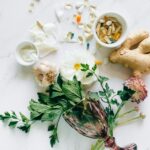
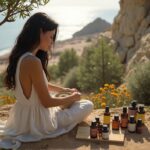
Stay Inspired – Join Our Inner Circle!
Subscribe to our newsletter for exclusive tips, soulful stories, product finds, and early access to new blog posts + freebies!

